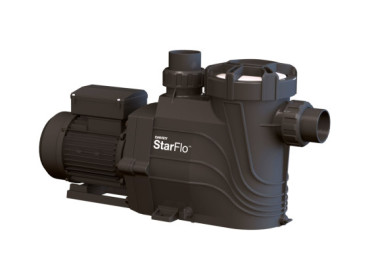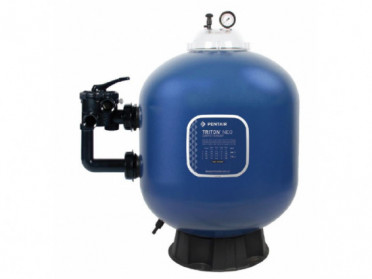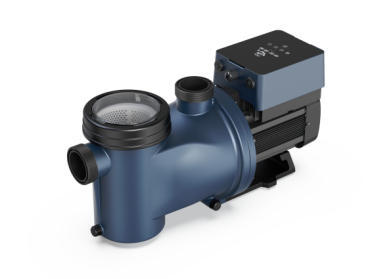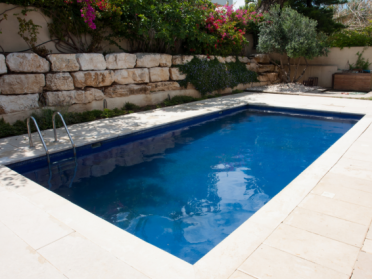
Pumps: How to Choose
Category : Construct
To find the pump flow for you just divide by 5 or 6 the total volume of water in your pool.
The following must be taken into account when choosing the pump:
- The intended use (private, public or collective with dedicated standards)
- Pool volume and calculated flow rate (Q = V / 4 or 5 h)
- Distance from the pool
- Number of suction (and discharge) sealing parts -More than 50% of the flow must be suctioned through the skimmers (1 skimmer = around 7 to 10 m3/h for 25m²)
- The type of hydraulicity (skimmers or overflow/mirror) -A mirror-type pool must have a minimum flow rate so that the water flows all the way round (possibility of using 1 filtration pump + 1 circulation pump)
The pump is installed before the filter
It suctions water from the suction manifold
It then transfers the water into the filter and then into other the other components (heating, treatment) and then to the pool.
Pump components
Hydraulic System
- Water inlet (suction) and outlet (discharge)
- Pre-filter: Used to receive a water buffer volume. Accommodates the basket which recovers large debris
- Diffuser: Centralises the water towards the turbine = funnel
- Turbine: used to transfer the water
- Outlet: sends the water back to the filter valve of the pool
Connection Between the Hydraulic System and Motor
- Leak tightness: 1 mechanical seal (also referred to as packing assembly)
Motor
- Mono: used most frequently
- Tri: on old facilities, Professional use, Beyond 2 to 3 hp (mono not sufficiently robust)
- Stator: motor winding
- Rotor: mobile motor
- Bearings: front and rear, rotation quality
Pump flow rate graph
- For a pump model, there are several motor powers and therefore several possible flow rates.
- The power is expressed in Horse Power (hp) or KW
- The flow rate is expressed in m3/h
- The operating pressure of a filter must not exceed 1 kg and is ideally below 800 mbar.
- This pressure will depend on the pressure drops related to the pipework and equipment.
- The Following graphs show the flow rates of the different motors for a given model
- A graph at 8mce (800 mbar) can be used for sizing the pump for most products on the market (machine room on the poolside at less than 10m [XA1]or below the level of the water line).
- 10 mce = 1kg of pressure or 1Bar
- 8 mce = 800gr of pressure or 800mbar
Variable speed pumps
There are 2 types of variable speed pumps:
- Pumps with permanent magnet motors
- Pump with an asynchronous motor
A variable speed pump has a motor which can modify the speed and therefore the flowrate of the pump.
Advantages:
- Silent operation
- Reduced electrical consumption: Divide the flow rate by 2 = divide the electrical consumption by 4
- Increased service life of the motor
- Programmable speeds according to
- Filtration time during swimming time
- Slow filtration cover closed
- Washing...
Related Products
More Maintenance Tips
Maintenance
Opening Your Pool: An Easy to Follow Guide
When spring is finally here and as the temperatures begin to climb, it’s time to think about getting the pool area ready for the warm weather. Opening a pool is now easier than ever and with a few simple steps, you can be ready to enjoy your pool in no time!

Improve
Pool Safety Equipment
There are many products that can be added to your pool area to enhance pool safety. Whether you are protecting your young children, older adults or even your pets, keeping your backyard up to date with the latest safety features is of the utmost importance. Here are a few products that you may want to consider:









